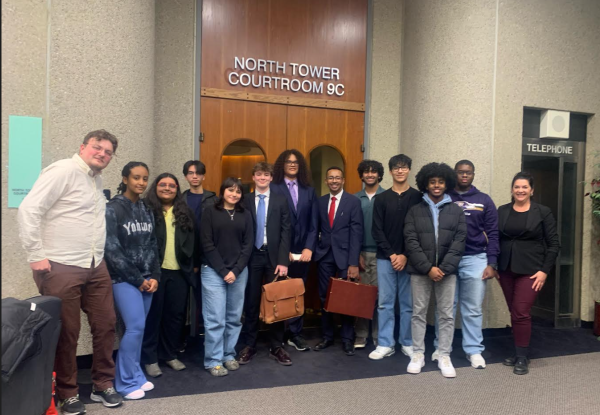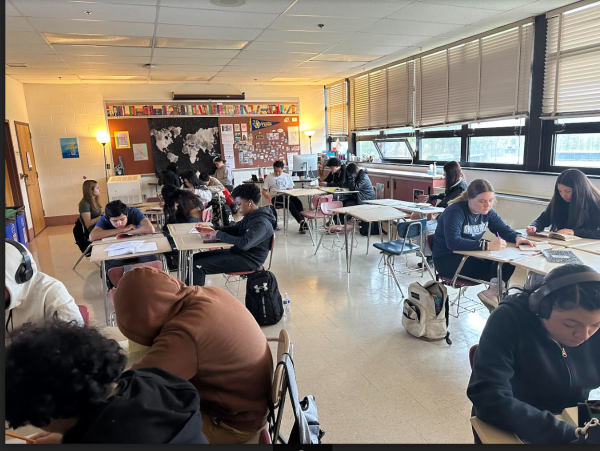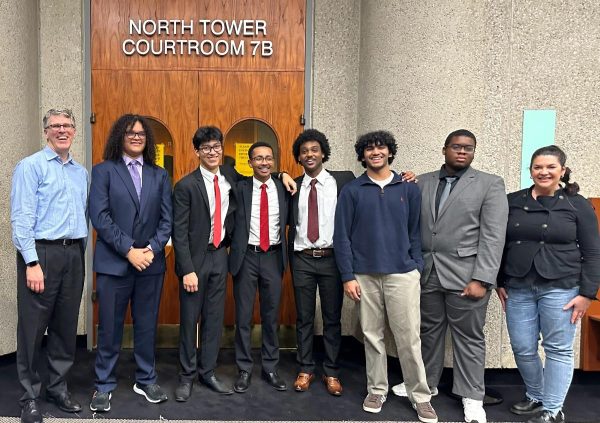MCPS Struggles To Close Achievement Gap
Former U.S. Dept. of Education Secretary Arne Duncan reads a book to Rolling Terrace Elementary School students in Montgomery County.
The Montgomery County Public School system has long been recognized as one of the best and highest-performing counties both nationally and statewide. However, this reputation is starting to fade away. In recent years, the student achievement gap between different ethnic and economic groups in MCPS has become quite noticeable and has played a role in this. Significant disparities in test scores and AP/IB results among the different schools in the county have raised concerns in the community.
High schools in Montgomery County that have generally higher-income students and families such as, Walt Whitman, Thomas S. Wootton, and Walter Johnson, also happen to have majority white student populations. These schools have shown higher academic achievement and have received notable rankings and acknowledgement from online websites such as U.S. News.
On the other hand, there are still many schools in the county that have not yielded the same impressive academic results as those mentioned above. High Schools in the Downcounty and Northeast Consortiums such as Springbrook, Wheaton, and John F. Kennedy tend to have lower test scores and academic results, and higher rates of economically disadvantaged and/or minority students.
Just by reflecting on student demographics of different Montgomery County High Schools, it is evident that de facto segregation in MCPS has become very prevalent throughout recent years. Some critics point to this segregation of social and economic groups in MCPS can be to blame for the achievement gap in our county.
Dan Reed, a writer for the Greater Greater Washington online publication wrote an article titled, “Segregation is causing Montgomery County schools’ achievement gap, but Josh Starr (former MCPS superintendent) won’t admit it.” In this article, Reed asserts that the evident segregation in MCPS is directly influencing these achievement gaps.
His theory is that the areas that are full of higher income families end up receiving more attention and resources due to the fact that these parts of Montgomery County are more affluent than others. The differences in facilities are obvious, as most of the older buildings reside in the downcounty consortium. Also, a new middle school, Silver Creek Middle School, has just recently been approved for construction in Bethesda, another reason to believe that such areas may be receiving more attention and resources than others.
Reed suggests that “white flight”, the trend of more affluent, white families fleeing lower income areas in search of better schools and housing, is a significant contributor to these discrepancies.
Now, “white flight” may or may not be a direct contributor to the achievement gap, but it is definitely happening. MCPS statistics have shown that there has been a significant decrease of white families and students in Montgomery County, while the overall population however, has grown.
So, what is actually causing this achievement gap, and how can it be stopped? Is “white flight” really a reason for this issue as suggested by Dan Reed? Or is it lack of proper funding and allocation of resources?
MCPS officials have tried various solutions to try to resolve this issue, and these approaches are still being debated and modified. Here are some of the recent decisions that the county has made pertaining to the achievement gap:
On May 26th of 2016, the Montgomery County Council recently approved an addition of $37.9 million to the MCPS budget in efforts to reduce class sizes and increase one-on-one time for students with their teachers.
On July 20th, 2016, MCPS partnered with the Norman and Ruth Rales Foundation to start the new Building Educated Leaders For Life program (BELL). BELL, a five-week summer program for lower income second and third grade students, utilizes hands-on math, literacy, and science activities to reduce the achievement gap within that age group. It is set to continue for the next four years.
MCPS has also made attempts to increase minority enrollment in Honors and AP/IB classes. During his tenure, former MCPS Superintendent Jerry D. Weast implemented a program called M-STAT. This program made school statistics and student outcomes accessible to both the county leadership and the public. MCPS uses this data to identify African American and Latino students who showed high enough academic aptitude to take these higher level courses such as AP or IB but chose not to, and encouraged these students to participate in those classes.
Hopefully, these newly implemented strategies and programs will help to reduce the achievement gap. If they do not work as intended, MCPS will have to keep trying new ideas, because this is an issue that has to be taken care of before it becomes overwhelming. All students, regardless of background deserves a voice, and an equal opportunity to a quality education, and it is the responsibility of the county leadership and school administrations to ensure that this is guaranteed for everyone.
















